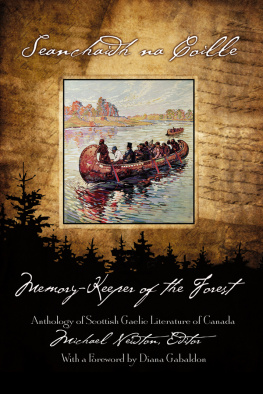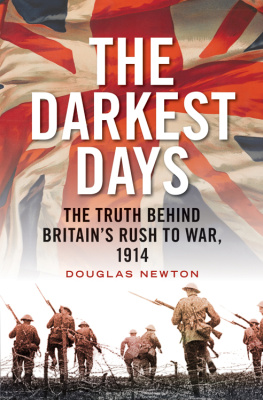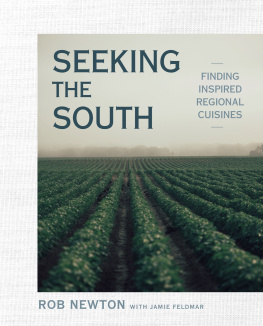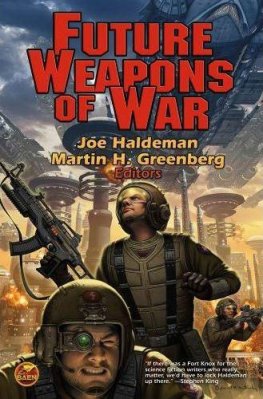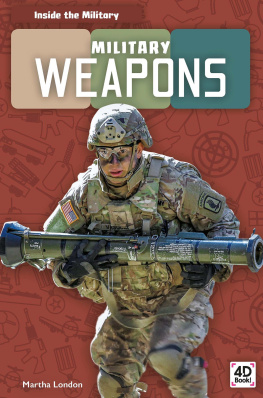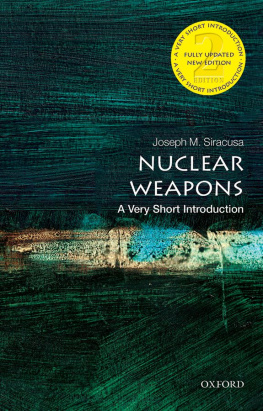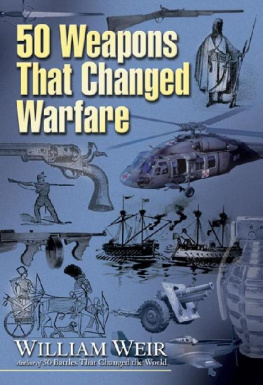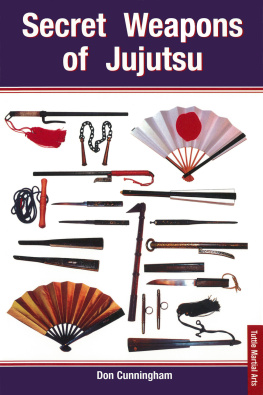
Armed and Dangerous
A Writers Guide to Weapons
BY MICHAEL NEWTON

Sanger, California
TheWriteThought.com

Thanks to Jim Hamby for his careful reading of the manuscript and invaluable advice and comments; and to Sturm, Ruger & Company, Inc., of Southport, Connecticut, and Hammond, Incorporated, of Maplewood, New Jersey, for permissions to reprint the illustrations that appear at the back of the book.
Armed and Dangerous: A Writers Guide to Weapons. Copyright 1990 by Michael Newton.
All rights reserved. No part of this bookexcept for short passages for comment and review purposesmay be reproduced in any form by any means, electronic, digital or mechanical, including photocopying and recording, or by any information storage or retrieval system without the written permission of the publisher:
The Write Thought, Inc.
1254 Commerce Way
Sanger, California 93657
559-876-2170
Library of Congress Cataloging-in-Publication Data
Kindle ISBN 978-1-61809-001-0
ePub ISBN 978-1-61809-002-7
Paperback ISBN 978-1-61809-003-4
Newton, Michael
Armed and dangerous : a writers guide to weapons / by Michael Newton.
p. cm. Includes bibliographical references.
1. FirearmsUnited StatesHistory. 2. FirearmsHistory. 3. Explosives, MilitaryHistory. 4. Firearms in literature. 5. Explosives, Military, in literature. 6. Adventure storiesAuthorship. I. Title.
TS533.2.N49 1990
683.400973dc20 90-12070
CIP

Contents


You will acquire a deep understanding of that ancient Christian moral principle, as applied to aimed fire, It is better to give than to receive. George Prosser, Black Politics, 1968 Theres nothing wrong with shooting, as long as the right people get shot. Dirty Harry Callahan

ONE
Fatal Attraction
G uns made this country what it is today.
Too strong, perhaps? Lets check our history.
From colonial times to the space age, firearms have been an integral part of American culture. Our nations very independence was a matter for debate until some nervous, nameless farmer stood on Concord bridge and fired a shot heard round the world. Old Betsy, Davy Crocketts rifle, was as famous as her owner in the battle for the Alamo. Guns tamed the wild frontier (or stole it from the Mexicans and Indians, depending on your point of view), and in another generation, automatic weapons made the Twenties roar. When the crew of Apollo 11 touched down on the moon, they were armedjust in case.
Despite our protestations to the contrary, Americans have been historically combative, fighting nine great wars and countless smaller conflicts in the past 213 years (including an invasion of the Soviet Union, at Archangel, in 1920). Twenty-three of forty U.S. presidents had military records, all but one of them in wartime; four saw combat in successive wars, and three were wounded by the enemy.
It may not be precisely true, as Mao Tse-tung suggested, that political power grows from the barrel of a gun, but firearms have frequently altered the course of American government. President Lincolns assassination in 1865 doomed any hopes of a Civil War cease-fire with malice toward none, leaving radical Republicans in firm control of reconstruction. (Ten years later, other weapons in the hands of Ku Klux Klansmen and the White Leagues would restore a Democratic solid South.) The murder of President Mc- Kinley placed Teddy Roosevelt in the White House, thereby inaugurating the progressive era, and gunshots in Dallas slammed the door on Camelot in 1963, obliterating plans for early withdrawal from Vietnam. In 1968 and 1972, presidential front-runners were gunned down in their prime, dramatically revising campaign strategies, and leaving millions of Americans without a candidate to call their own.
As guns have made their mark on history, for good or ill, so they have crept into our common speech. Familiar idioms remind us we should keep our powder dry and caution us against the risk of going off half-cocked. Honest persons are square shooters, while their reckless counterparts are loose cannons, tending to shoot from the hip. If bad news must be tendered, we prefer to take it point-blank, right between the eyes.
Our love affair with lethal hardware carries over into entertainment. Feature films are dedicated to historic firearms [ Winchester 73 ), their inventors ( Carbine Williams ), and the individuals who used them in pursuit of gold or glory. Action heroes are defined by their selection of specific weapons, to the point that retail markets are affected. In the early 1970s, the popularity of Dirty Harry tripled prices on the Smith and Wesson .44 Magnum revolver; ten years later, terrorists and cocaine cowboys learned about the Ingram submachine gun from McQ and other movies, taking on the little room broom as their own.
Regardless of your personal opinions on the subject, be they hard line NRA or something more akin to actress Sally Struthers (traumatized by the requirement that she fire a pistol in the course of a performance), any writer who observes the marketplace must recognize that firearms play a major role in modern fiction. Cover art is only half the story here. Unless youre writing pure romance, science fiction, or epic fantasy, odds are that someone in your story will be packing heat. And if youre doing genre workhistorical or Western novels, mysteries, police procedurals, war stories or action/adventureyou will simply have to make your peace with guns. Case closed.
Considering the role that firearms play in modern fiction, it is scandalous to view their handling by authorsmajor names includedwho adopt facades of expertise. Im not discussing philosophical attitudes toward gun control, but rather technical mistakes and flagrant nonsense which reveal an authors ignorance for all to see. A few examples:
In The Family , a novel of the Mafia, author Leslie Waller arms a platoon of security guards with .44 Magnum revolvers, each holding seven rounds in its cylinder, capable of disemboweling a man at 200 yards. The .44 and several other large revolvers, hold a maximum of six rounds, although there are handguns that offer the increased capacity.
In Robert R. McCammons Stinger (and a host of other novels published through the years), assorted heroes check, recheck and double-check the safety mechanisms on their .38 revolverssafeties that exist only on some revolvers manufactured in this century.
Adventure writer Mark K. Roberts, in his novel Jakarta Coup , describes a Soviet AK-47 assault rifle spitting out 5.56mm bullets, when, in point of fact, the weapon uses the larger-sized 7.62mm ammunition.
Another veteran action writer, Adam Lassiter, interrupts his novel Triangle with a description of the dual firing handles on an M-60 machine gun. Anyone whos ever seen the weapon knows the 60 only has one handle (except for the M-60D model); Lassiters description properly applies to Maxim-style machine guns from the First World War and certain heavy pieces manufactured at a later date.
Douglas Fairbairn, in his novel Shoot , describes a principal characters private gun collection, including Uzi submachine guns, which have been converted to chamber the 7.62mm NATO round.
Next page

